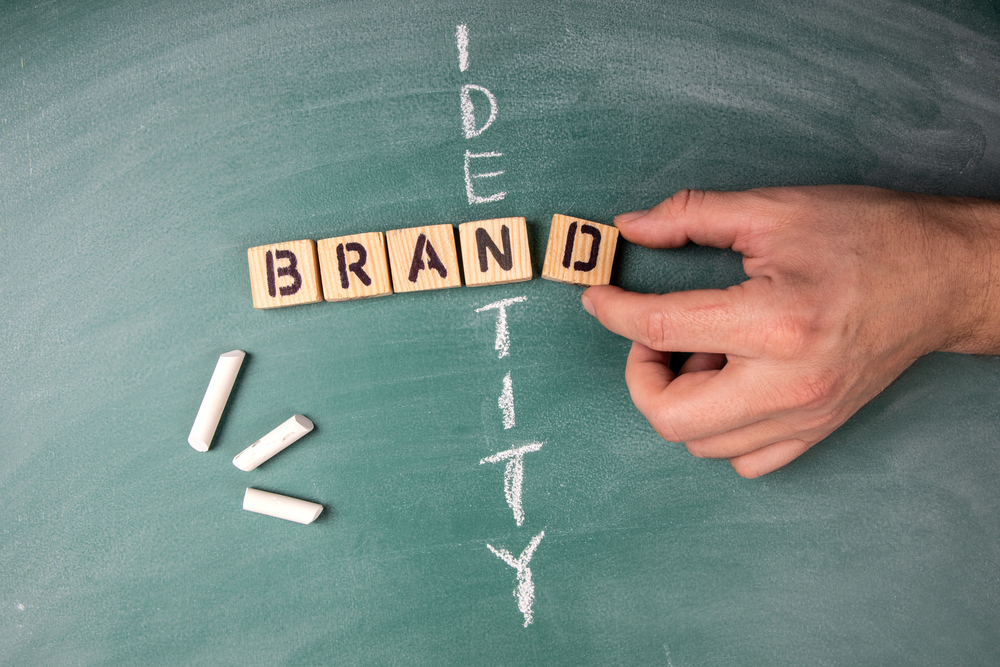The Relationship Between Brand Identity and Logo Design
Introduction
In the dynamic realm of branding, where every element speaks a language of its own, "brand identity" and "logo design" are terms that often swirl around. To the untrained eye, they might appear to be twins, but in reality, they have distinct personalities and roles in the storytelling of a business. At Logoup, we've navigated these branding waters countless times, bringing to life the unique tales of businesses through their logos and identities. In this blog, we'll delve deep into the symbiotic relationship between these two, highlighting why a logo, though essential, is but a single chapter in the extensive book of brand identity. Dive in with us, as we unpack these concepts with the expertise and insights gathered over years of crafting memorable brands.
Delving Deeper into Brand Identity
Brand identity isn’t just about how a brand looks; it’s about how it feels, how it communicates, and how it's perceived. It’s the first impression and the lasting impact, the promise made and the promise kept. When we delve deeper into the elements that make up a brand's identity, we can begin to see how they work together to create a comprehensive, memorable experience for consumers.
1. Color Palette:
Colors are more than just visual aesthetics; they communicate emotions and stories. Each hue has a psychological effect that can influence perception and decision-making.
- Yellow, for instance, can evoke feelings of happiness and positivity. It's often used by brands that want to exude warmth and approachability.
- Green is associated with nature, health, and tranquility. Companies that prioritize sustainability or offer health-related products might favor this color.
It’s not just about the individual colors, either. The combination of colors and how they contrast or complement each other plays a role in the brand’s narrative. Consider the calmness of blue juxtaposed with the urgency of red; the combination can indicate trustworthiness with a hint of excitement.
2. Typography:
Beyond just readability, the typeface a company chooses sends a direct message about its character.
- Script fonts, with their elegant and flowing characters, might be used by luxury brands aiming for a touch of sophistication or nostalgia.
- Modern fonts, which have a clean and contemporary design, can indicate innovation, making them ideal for tech companies or startups.
It's also vital to consider typography's scalability, ensuring that it remains legible across various platforms and sizes, from mammoth billboards to tiny mobile screens.
3. Voice and Messaging:
Voice isn’t about the sound waves produced; it’s about the character and emotion behind the words. Every brand has a voice, whether it’s authoritative, playful, sincere, or any shade in between.
- Narrative: Behind every successful brand is a compelling story. This narrative, whether it’s about the founder’s struggles or the company’s mission to change the world, resonates with consumers, adding depth and relatability.
- Consistency: While a brand may tailor its message for different platforms or demographics, the underlying voice must remain consistent. This fosters trust and ensures that the brand is instantly recognizable, regardless of where it's encountered.
- Engagement: It’s not just about speaking; it’s about listening. Engaging with the audience, understanding their needs, and responding with empathy and authenticity strengthens the bond between brand and consumer.
In essence, brand identity is the soul of a company. It's the ethos, the culture, and the values. Every element, from colors to typography to voice, plays a pivotal role in shaping perceptions. When these elements are harmoniously aligned, they create a symphony that resonates deeply with consumers, setting the brand apart in a crowded marketplace and ensuring its longevity and success..
Diving Deeper into Logo Design
The power of a logo extends far beyond mere aesthetics. It acts as the anchor for a brand, rooting it firmly in the minds of consumers. When a logo is done right, it becomes synonymous with the brand's essence, capturing its ethos and values in a compact visual representation. Let’s delve into the nuances of logo design.
1. First Impressions:
- Instant Recognition: In a world inundated with brands, a distinctive logo helps a company stand out in the crowd. Whether it’s the iconic Nike swoosh or the timeless Mercedes-Benz star, these logos demand instant recognition.
- Emotional Connection: Beyond recognition, logos have the power to evoke emotion. For instance, the playful curvature and bright colors of the Toys "R" Us logo immediately spark nostalgia and joy.
2. Consistency Across Platforms:
- Versatility: A great logo functions across a multitude of mediums and applications. It must retain its clarity and impact, whether displayed on a giant LED screen or as a small icon on a mobile app. This flexibility ensures that no matter where consumers encounter the brand, the logo remains consistent.
- Adaptability: As technology and trends evolve, logos should be adaptable enough to evolve without losing their core essence. Consider how many brands have simplified their logos over time to cater to digital platforms without losing their core identity.
3. Symbolism:
- Storytelling: Behind many iconic logos lie rich tales. For instance, the Amazon logo features a smile that goes from A to Z, indicating the brand’s promise to deliver everything from A to Z, while also evoking the joy of receiving a package.
- Cultural Resonance: Some logos tap into cultural symbols or motifs, allowing the brand to resonate on a deeper level with specific audiences. This is especially important for brands that cater to diverse global audiences.
The Interplay between Brand Identity and Logo Design:
Understanding the delicate interplay between brand identity and logo design is crucial for any business.
- Consistency and Cohesion: Just as every chapter in a book contributes to the overarching narrative, every element of brand identity – from color schemes to typography – should align with the logo. This creates a cohesive and harmonious brand experience.
- Reflecting Growth and Evolution: Over time, as businesses grow and evolve, it might become necessary to revisit and revamp the logo. However, this evolution should still maintain a connection to the original, ensuring that long-time consumers still feel a sense of familiarity.
- Maintaining Authenticity: While it's essential for logos to be trendy and relevant, they should primarily be authentic. Chasing trends might lead to frequent changes, confusing consumers. An authentic logo, rooted deeply in the brand’s identity, remains timeless.
A logo might be the tip of the iceberg when it comes to branding, but it's a crucial tip. It’s the emblem that consumers associate with experiences, values, and stories. While the brand identity paints the grand canvas of a brand's world, the logo is the signature at the bottom – a stamp of authenticity and promise. Together, they form the yin and yang of branding, each incomplete without the other, each amplifying the power of the other.
Closing Thoughts
Navigating the vast landscape of branding can sometimes seem daunting, but at its heart, it's a journey of storytelling. The logo is that compelling prologue which piques interest, while the brand identity unfolds chapter by chapter, immersing audiences in a brand's ethos, values, and vision.
Branding is not just about aesthetics; it's a strategic endeavor. The logo and brand identity need to be more than just visually pleasing—they should resonate with the target audience, spark emotions, and evoke trust. It's this emotional and psychological connection that transforms casual onlookers into dedicated brand enthusiasts.
In today's digital age, where consumers are bombarded with an endless stream of information and options, the strength of a brand's identity and logo can make all the difference. They serve as the beacon, cutting through the noise and drawing consumers towards them.
Moreover, as brands evolve and grow, so too must their branding elements. But, regardless of how they change or adapt, the core essence should remain unwavering. It's this consistency, combined with the ability to innovate, that ensures longevity and relevance in an ever-changing marketplace.
In conclusion, while a logo might be the face of a brand, its identity is the soul. Together, they forge an indomitable presence, creating lasting impressions and building meaningful relationships with consumers. Understanding and harnessing this synergy is the cornerstone of successful branding.
Categories
Recent Posts
- The Best Custom Polos for Workwear and Events
- The Most Popular Custom Hats for Every Occasion
- Why Choose a Mesh Back Hat?
- Exploring Backstrap Options: The Benefits and Drawbacks of Popular Hat Closures
- The Perfect Pair: Branded Bills Hats for Embroidery
- Trendy Camo Hats for the Outdoors: Customize the Richardson 111P with LogoUp
- The Ultimate Guide to Customizing the Richardson 320 Washed Chino Hat with Embroidery
- Embroidery on the Otto Cap 39-165: High-Performance Customization for Every Occasion
- LogoUp Holiday Gifts: Embroidered and DTF-Decorated Richardson 112, 112PFP, and 112PM
- Gifting LogoUp Custom Campfire Mugs: Thoughtful, Versatile, and Personalized
















































































Add Comment